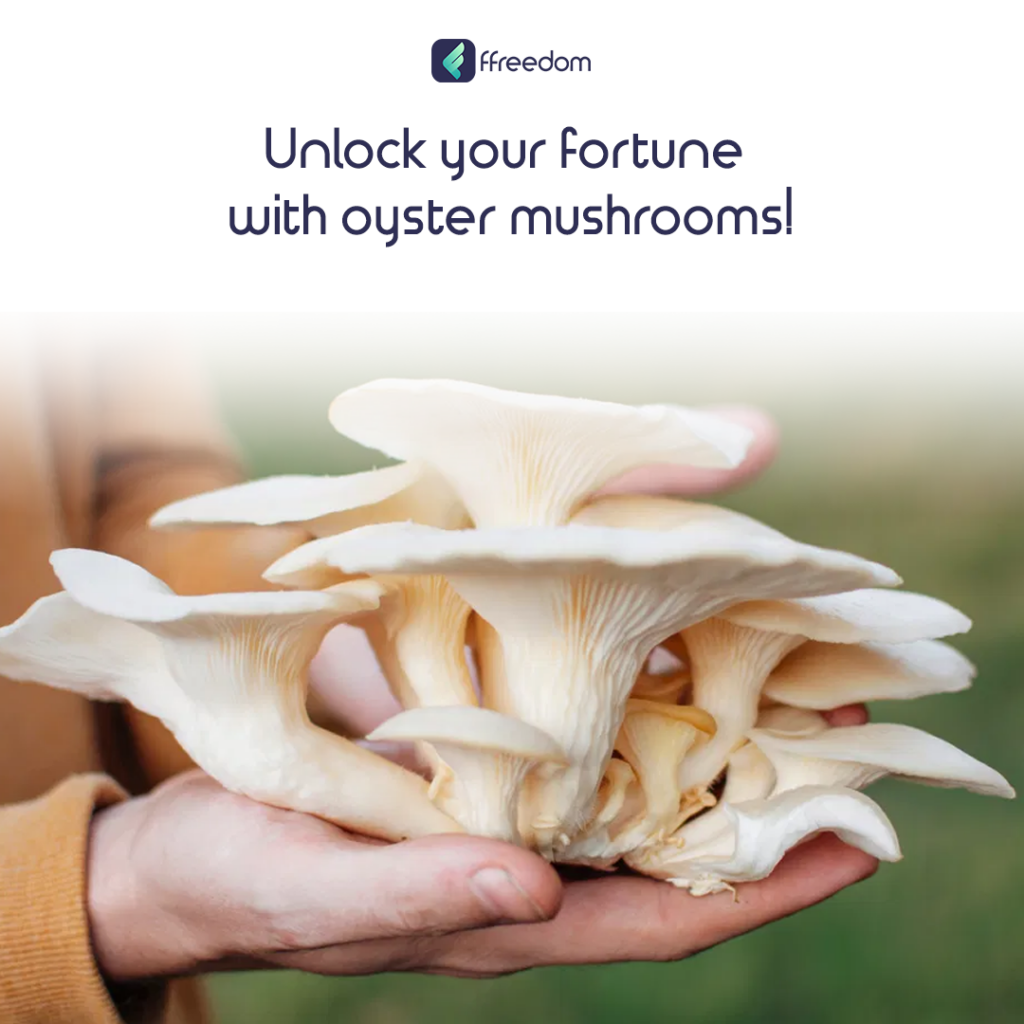Introduction
Due to their capacity to grow quickly and efficiently on a variety of lignocellulosic media, their flexibility, complete ease of farming, and their nutritional value—particularly as a source of protein—oyster mushrooms are by far the most popular edible mushrooms. They are grown all over the world for their medicinal properties, flavorful and aromatic qualities, ability to degrade lignin and phenol, ability to fight off infection, ability to boost the immune system, and ability to produce secondary metabolites such as terpenes, alkaloids, and phenols.
This blog will cover all the fundamentals related to oyster mushroom cultivation in a way that no end remains loose.
Prerequisites for oyster mushroom production
Agroclimatic conditions needed for oyster mushrooms.
For six to eight months every year, oyster mushrooms may grow at an intermediate temperature of 20 to 300C and a humidity of 57% to 70%. It may be increased during the summer by adding the additional humidity needed for its development. In the upper areas, the ideal growing season for oyster mushroom cultivation seems to be from March/April to September/October, and from September/October to March/April in the lower parts.

Various oyster mushrooms exist.
With the exception of P. olearius and P. nidiformis, that are allegedly deadly, all types of oyster mushrooms can be eaten. The genus has roughly 38 species that have been identified globally. 25 species have recently been commercially grown in various parts of the world.
the significance of oyster mushrooms
Vit C and B complex are abundant, and the protein level ranges from 1.6 to 2.5 %. The majority of the inorganic salts required by humans are present. Niacin is present in potatoes roughly ten times more than in any other vegetable.
The major benefit of the folic acid found in oyster mushrooms is that it treats anemia. Due of its low sodium: potassium ratio, carbohydrate, fat, and calorific value, it is suitable for those with hypertension, overweight, and diabetes. Being high in fiber and having alkaline ash makes them suitable for ingestion for people who have constipation and hyperacidity.
necessary substrate kind
On any form of dried agricultural waste, such as leguminous plants, maize, jowar, bajra waste, wheat, or paddy straw, oyster mushrooms can be grown.
Oyster mushroom cultivation.
Oyster mushroom farming can be divided into four stages: straw treatment, inoculation, incubation, and fruiting. Each stage is critical to another and has an impact on crop output.
Caution in Oyster mushroom growing.
Maintaining good hygiene is always advised, and wire mesh should be used to cover windows and doors. Allergies are brought on by oyster mushroom spores, so it is advisable to turn on the exhaust for 2 hours before trying to enter the cropping rooms. A mask must be worn throughout cultural procedures, and windows should be left open.
Steps in oyster mushroom farming
The following steps make up the oyster mushroom farming process;
- spawn preparation or acquisition
- preparation of the substrate
- emergence of substrate
- management of crops

Acquisition: For cultivating oyster mushrooms, prepare the spawn.
For inoculation on the sterile substrate, a single colony of oyster mushrooms is required. Takes ten for mycelial development on cereal grains can take up to 15 days. Jowar and bajra grains have reportedly been shown to be superior to wheat grains.
preparation of the substrate for oyster mushroom cultivation
This fungus may be grown on a variety of agricultural wastes that are rich in cellulose and lignin, which promotes the production of more cellulose-related enzymes, which increases output. These include utilized citronella leaf, rice, wheat, and ragi straw, as well as the stalks and leaves of these plants. In addition, pea nut hulls, dry crop stalks, sunflower stalks, spent tea leaves, discarded waste paper, and synthetic compost made from button mushrooms are also acceptable materials. etc. Additionally, it may be grown utilizing industrial wastes like coffee grounds and sludge from paper mills, pomace from apples, tobacco waste, and other wastes.
Spawning the Substrate
125 to 150 mesh thick plastic bags (60 x 45 cm) can be filled with spawning substrates. On each side, there should be 10 to 15 tiny holes (0.5–1.0 cm in diameter), with 2–4 of those being in the bottom to allow for water leaching. Higher and earlier harvests are provided through perforated bags (4-6 days) because to the high CO2 buildup, which prevents fruiting, perforated bags are better than non-perforated bags. One wooden fruit packing boxes that have been emptied can be used to fill the substrate. 200 to 300 polythene sheets in a rectangle wooden or metal box, 1.25 x 1.25 m of gauze are laid out. A small rectangular box is created by filling the spawned substrate and folding the polythene sheet on all four sides. It is then compressed firmly and secured with a piece of rope. The block is incubated as is, and the polythene sheet used to support mycelium development is then removed.
Crop Management:
The spawned sacks are retained there for mycelial development. To encourage mycelial colonization of the substrate, spawn sacks can be carefully stored on a raised platform, shelves, or even hung in the cropping area. The bags must not be opened otherwise there is no need for ventilation while the mycelium is growing. Furthermore, no high relative humidity is required, hence no water needs to be sprayed. Mycelium is ready to bear fruit once a thick mycelial mat has formed and it has completely colonized the substrate. Mold-contaminated bags should be thrown away, but bags with patchy mycelial development can be left out for a few more days to finish the process. On wooden planks or shelves, all of the bundles, cubes, or blocks are stacked with a minimum of 15 to 20 cm among each sack in the tier.
Final words
Starting a new business may appear to be an impossible endeavor from a distance, but as you become more familiar with the fundamentals, your confidence and knowledge will also begin to grow. Therefore, it’s vital that you maintain your focus and discipline after a strong start. You now have a solid grasp of the key elements and essentials needed to thrive in this industry. For further information, you can check out the ffreedom app and find a variety of courses and modules in this industry for a clearer and better comprehension.




